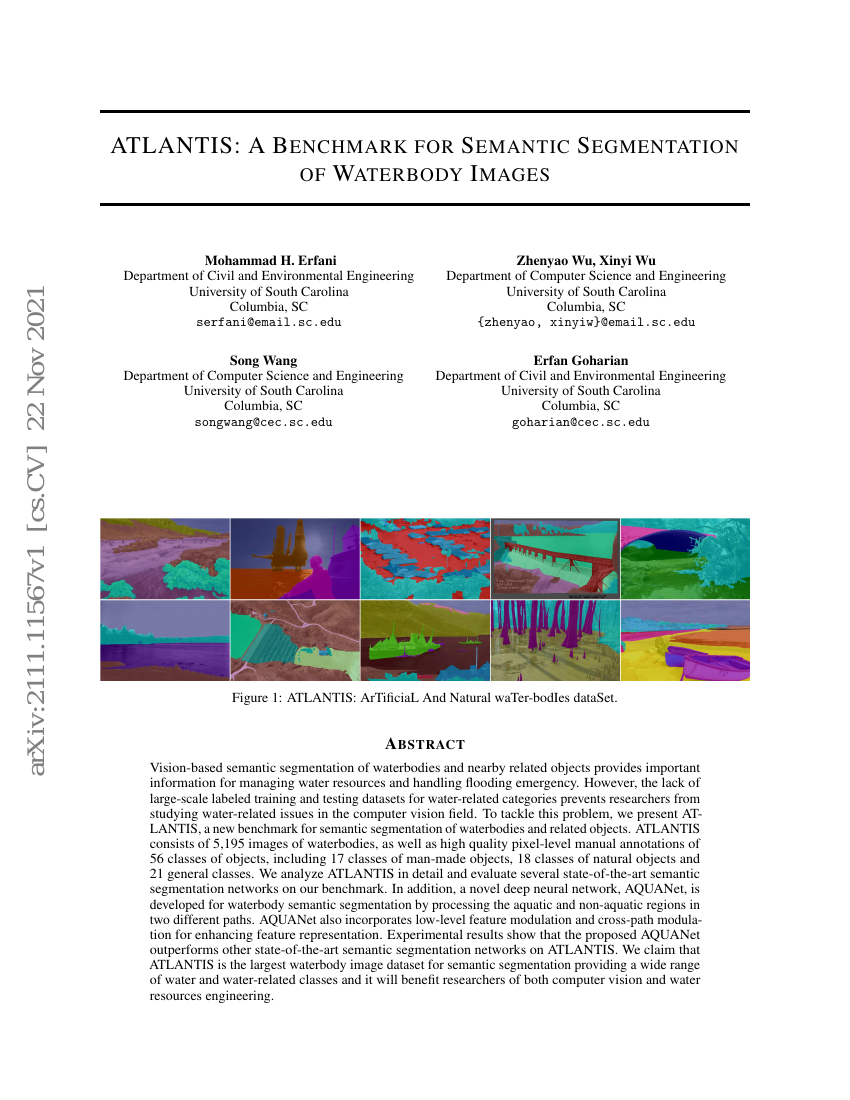Command Palette
Search for a command to run...
Seyed Mohammad Hassan Erfani Zhenyao Wu Xinyi Wu Song Wang Erfan Goharian

Abstract
Vision-based semantic segmentation of waterbodies and nearby related objects provides important information for managing water resources and handling flooding emergency. However, the lack of large-scale labeled training and testing datasets for water-related categories prevents researchers from studying water-related issues in the computer vision field. To tackle this problem, we present ATLANTIS, a new benchmark for semantic segmentation of waterbodies and related objects. ATLANTIS consists of 5,195 images of waterbodies, as well as high quality pixel-level manual annotations of 56 classes of objects, including 17 classes of man-made objects, 18 classes of natural objects and 21 general classes. We analyze ATLANTIS in detail and evaluate several state-of-the-art semantic segmentation networks on our benchmark. In addition, a novel deep neural network, AQUANet, is developed for waterbody semantic segmentation by processing the aquatic and non-aquatic regions in two different paths. AQUANet also incorporates low-level feature modulation and cross-path modulation for enhancing feature representation. Experimental results show that the proposed AQUANet outperforms other state-of-the-art semantic segmentation networks on ATLANTIS. We claim that ATLANTIS is the largest waterbody image dataset for semantic segmentation providing a wide range of water and water-related classes and it will benefit researchers of both computer vision and water resources engineering.
Code Repositories
Benchmarks
| Benchmark | Methodology | Metrics |
|---|---|---|
| semantic-segmentation-on-atlantis | Erfani et al. | A-acc: 68.63 A-mIoU: 50.34 Accuracy: 75.18 mIoU: 42.22 |
Build AI with AI
From idea to launch — accelerate your AI development with free AI co-coding, out-of-the-box environment and best price of GPUs.